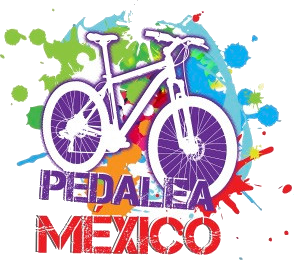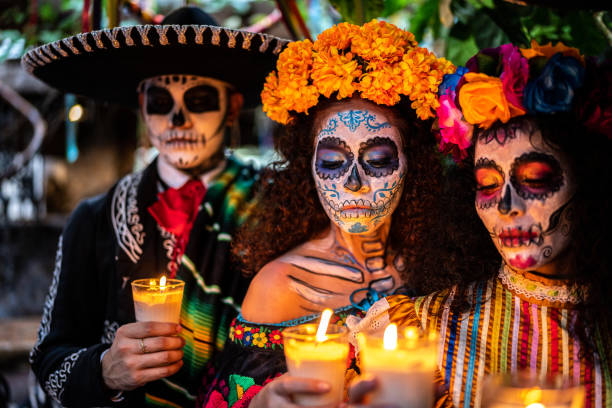Every year between late October and early November, something extraordinary happens in Mexico: streets fill with marigolds, altars glow with candles, bakeries release the scent of fresh pan de muerto, and families welcome back the souls of their loved ones.
If you’re thinking of traveling to Mexico for Día de Muertos (Day of the Dead), you’re not alone. It’s one of the most beautiful, emotional, and visually stunning cultural celebrations in the world—and June is the perfect time to start planning your trip.
Whether you’ve just heard of the holiday through movies like *Coco* or you’ve been dreaming of seeing it in person for years, this guide will help you understand what it’s all about—and how to experience it the right way.
What Is Día de Muertos?
Día de Muertos is not Mexico’s version of Halloween, although the two happen around the same time. It’s a deeply spiritual, joyful, and artistic celebration of life and memory.
Rooted in pre-Hispanic traditions and merged with Catholic influences, this holiday is a time when Mexican families believe the souls of their ancestors return to visit. Homes, schools, museums, and even public plazas are decorated with altars (ofrendas) filled with offerings: flowers, food, candles, sugar skulls, and photos of the departed.
It’s not a sad or somber occasion. It’s full of color, music, laughter, and meaning. People gather to tell stories, play music, eat together, and keep the memory of their loved ones alive.
When Does It Happen?
The heart of the celebration takes place on these dates:
– October 31: Preparations begin, especially for children who passed away (Día de los Angelitos).
– November 1: All Saints’ Day – honoring deceased children.
– November 2: All Souls’ Day – dedicated to adults who have passed.
In many cities, including Mexico City, the atmosphere begins to transform from the third week of October. Public altars, markets, museum events, and themed tours often begin as early as October 25.
What Is It Like to Experience It?
Imagine walking through a historic square filled with flickering candles, colorful papel picado, and the scent of cempasúchil (Mexican marigolds) in the air. Musicians play softly in the background. People gather to admire the altars or leave a small token—maybe a piece of bread or a photo.
In the same city, you might also witness:
– Vibrant parades with giant skeleton puppets, dancers, and floats.
– Markets full of sugar skulls, masks, candles, and traditional crafts.
– Families in cemeteries decorating graves with flowers, music, and picnics.
It’s a blend of ancient ritual and modern creativity—and there’s nothing else quite like it.
Top Destinations for Día de Muertos
Three destinations stand out for their depth of tradition and unique atmosphere:
– Oaxaca: Known for its indigenous roots and lively comparsas (street parades).
– Pátzcuaro: Famous for its candlelit lake ceremony on Janitzio Island.
– Mexico City: Ideal for first-time travelers. It’s accessible, diverse, and packed with events you can reach by foot, metro, or Uber.
If you’re staying in Mexico City, you’ll have access to dozens of public altars, cultural events, parades, and museum exhibits. Unlike other destinations, you don’t need to take another flight or rent a car—everything is close and well-connected.
Why You Should Plan Early
Día de Muertos is one of the busiest travel periods in Mexico. In recent years, over a million visitors have attended the main parade in Mexico City alone. Hotels, tours, and museums sell out weeks in advance.
By planning early, you can:
– Secure better prices on flights and accommodations
– Book spots on the best tours and experiences
– Choose authentic and smaller-scale events
– Travel with more confidence and less stress
What to Book in Advance
– Frida Kahlo Museum (Casa Azul): One of the most visited museums in Mexico. It often sells out weeks in advance.
– Cultural walking tours: A great way to understand the meaning behind altars and public spaces.
– Parade viewings: Especially important in Mexico City, where front-row spaces are limited.
– Bike tours: A unique way to explore decorated neighborhoods and parks.
Where to Stay in Mexico City
Mexico City offers neighborhoods for every travel style. Some favorites include:
– Roma & Condesa: Stylish, walkable, and filled with cafes and parks.
– Centro Histórico: Perfect for those who want to be close to the Zócalo and major public events.
– Coyoacán: A peaceful, traditional area with strong Día de Muertos customs. (We’ll cover this in a separate blog post.)
When to Arrive and Leave
Plan to arrive by October 26 or 27 to settle in and enjoy early events. Stay through November 2 or 3 to fully experience the celebrations.
The main parade in Mexico City usually takes place on the Saturday before November 2. In 2025, that may fall on October 25, though the exact date will be confirmed closer to the event.
Final Tips for First-Time Visitors
– Expect large crowds: Be patient and arrive early to public events.
– Be respectful: Not all altars are meant to be photographed. Always ask first.
– Leave time for wandering: Many of the most moving experiences happen unexpectedly.
Start Planning Your Day of the Dead Trip Now
If you want to experience Día de Muertos in 2025, June and July are the perfect months to begin organizing your trip.
From public events and museum visits to personal walking tours, there are countless ways to explore the meaning and beauty of this season. We’ll be sharing more tips, stories, and insider guides—including a full post on celebrating Day of the Dead in Coyoacán.
Ready to plan your visit? Our team offers small-group tours, expert recommendations, and personalized support. Reach out—we’re here to help you experience this beautiful tradition the right way.

